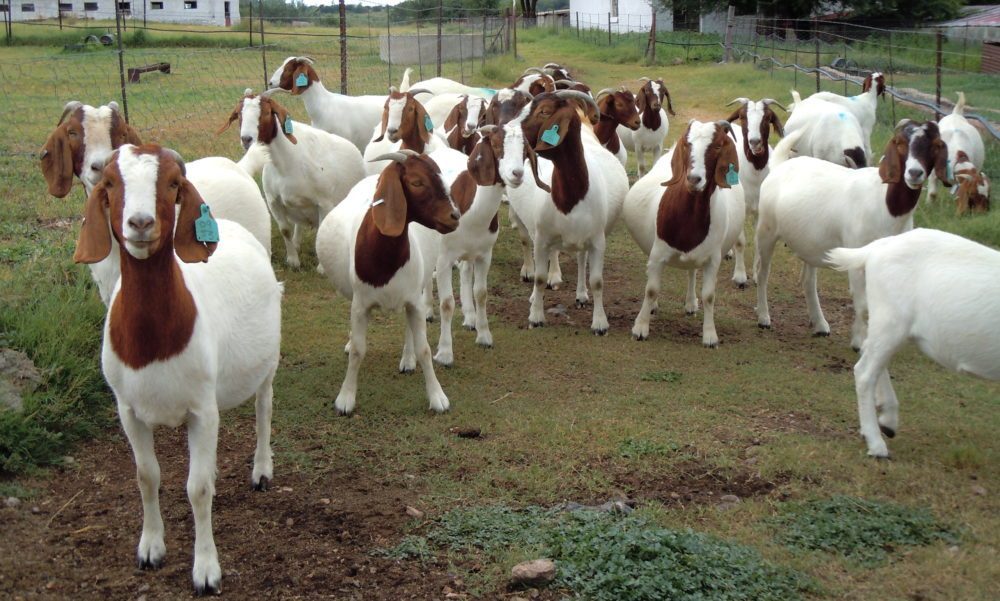By Dumisani Nyoni
Middlemen are ripping off goat farmers in the Matabeleland region, taking as much as 55% of value created in the goat value chain, leaving farmers with next to nothing, a new report has revealed.
According to the latest Goat Value Chain Scoping Study report prepared by the Value Chain Alliance for Livestock Upgrading and Empowerment Project (VALUE), goat farmers in the Matabeleland region are not benefiting much from goat farming.
“Brokers or middlemen dominate the collection and brokering function. According to fair value farming brand calculations done by the study, the brokers are taking 55% of value created in the goat value chain,” the report reads in part.
“The brokers are known to engage in unethical dealings with the farmers. The farmers are mostly underpaid for their goats. These brokers either self-act or buy on behalf of abattoirs. The brokers buy goats in the Matabeleland region and supply abattoirs and non-governmental organisations involved in goat breeding projects,” it said.
The study noted that there have been attempts to formalise goat collection and brokering, through the setting up of auction centres in Gwanda and Beitbridge districts but the initiative suffered a stillbirth as these centres are not being used due to various reasons.
The study also observed that brokers wholesale and retail to urban markets especially the live goat markets.
It also noted that the goat value chain governance is captured by the brokers.
“The participation of the farmers in the goat value chain governance is due to their weak organisation and information asymmetry experienced in the sub-sector. The brokers have all the market information in the sector. This information relates to prices, who and where the goats and chevon meat is required,” it said.
To enhance efficiency in the goat value chain, the study recommended vertical integration of the chain by the goat farmers. The vertical integration will be both backwards and forward.
The essence of vertically integrating the farmers in the goat value chain is to reduce the inefficiencies at the input supply, collection and brokering functions. The integration will be achieved through development of the organisation capacities of farmers through the formation of groups and association, the setting up of the goat improvement centres (backward integrations) and the goat aggregation and slaughter centres (forward integration).
“The improvement centres will also act as learning centres for the farmers. The aggregation centres will be for live goat marketing and while slaughter centres will herald the formation of chevon meat cold chains,” it reads.
It also recommended farmer owned aggregation and slaughter centres at district and provincial levels must be set up. The aggregation centres will create enough volumes of goats to meet the demand of consumers and abattoirs. The slaughter centres will facilitate the establishment of a cold chain.
The cold chain reduces the unit transportation costs of the chevon meat, subsequently increasing the profit margins. The aggregation and slaughter centres will be buying the goats from farmers.
The establishment of a goat market information system to remove the information asymmetry in the goat value chain is recommended.
The study recommends the development of linkages between the abattoirs and goat aggregation centres at district and provincial levels. These linkages will enable the abattoirs to fully utilise their installed capacities
Global consumption of goat meat is increasing and consumption in Africa has increased to almost 400 million tonnes per year, studies say.
The goat population in the country is estimated to be around 3,8 million, with the national average goat flock size per household being 5,8 and the proportion of rural households which owns goats is 43,6%, according to the Zimvac 2019 report.
The highest proportion of households who own more than five goats is in Matabeleland South which has 39,3% followed by Matabeleland North with 23%.
The goat sector contributes about 19% to the agricultural sector, according to the National Agriculture Policy (2018-2030).
Among the study districts, Beitbridge has the highest number of goats (190 432), followed by Gwanda at 187 188, Chipinge (114 705), Mbire (89 139), Lupane (49 107) and lastly Mudzi with 40 000 goats.


We are trying to organise ourselves as goat farmers in Mat districts and would like to network with like minded organizations. Keep us posted, thankyou for the sharing